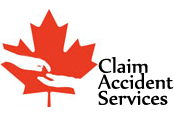
If you’re like many Ontario residents, you often rely on riding your bicycle or walking to improve your health and mental well-being, as well as help reduce carbon emissions. Unfortunately, these healthy habits come with a big risk – sharing the road.
If a motor vehicle collides with you while you are out on the road on foot or on a bicycle, the consequences can be deadly. That’s why it’s important to observe bicycle and pedestrian laws and best practices, including using reflectors to improve visibility.
Safety By the Numbers
Over 90% of the messages to a driver’s brain related to operation of the motor vehicle come from visual cues. The average driver takes one second to register a visual cue and another second to respond physically. If a car is travelling at a speed of 80km/h, (22 meters per second), by the time the driver even begins to register a response, the car has already traveled 44 meters.
A driver can only see a child pedestrian with low beam headlights from 30 meters away. By the time the driver could react, they would have traveled a tragic 14 meters past the child’s location.
If that child is wearing a reflector, however, the visible distance with low beam headlights increases to 150 meters – a big enough difference to save a life.
According to the Office of the Chief Coroner for Ontario:
- It was dark or twilight for 57% of fatal pedestrian collisions.
- Visibility was clear 95% of the time for fatal pedestrian incidents.
- Road conditions were dry for 81% of the incidents.
- Pavement was wet for 14% of the incidents.
- Ground was snowy in 5% of the incidents.
- Pedestrian collisions were generally more frequent weekdays, when traffic volumes are highest.
Reflector laws for cyclists
It’s not just a good idea to use reflectors and lights for cyclists, it’s the law. And cyclists who violate the law can be fined for non-compliance. In fact, the Ontario Ministry of Transportation states:
Non-compliance with bicycle light, reflector and reflective requirements carries a total payable fine of $110 ($85 set fine plus $20 victim fine surcharge and $5 court fees), which is in line with all other cycling violations.
The Highway Traffic Act also states:
(17) When on a highway at any time from one-half hour before sunset to one-half hour after sunrise and at any other time when, due to insufficient light or unfavorable atmospheric conditions, persons and vehicles on the highway are not clearly discernible at a distance of 150 meters or less, every motor assisted bicycle and bicycle (other than a unicycle) shall carry a lighted lamp displaying a white or amber light on its front and a lighted lamp displaying a red light or a reflector on its rear, and in addition white reflective material shall be placed on its front forks, and red reflective material covering a surface of not less than 250 millimeters in length and 25 millimeters in width shall be placed on its rear. 2015, c. 14, s. 21 (2).
What Are Safety Reflectors?
Safety reflectors bounce available light back along the path from which it came. When light originated from a car’s headlights, the reflectors appear to light up, making the user of the reflectors more visible to drivers from a farther distance away.
These reflectors are intended for use by pedestrians, runners, motorized and non-motorized vehicles. Although they do not produce light, they appear to light up when a light source shines on them. Safety reflectors are especially useful in areas without streetlights.
Safety vests have permanently fixed reflective stripes, whereas safety reflectors are stand-alone devices that can be attached via safety pin or string to any article of clothing as needed.
Reflectors are usually fixed on vehicles. On bicycles, common reflector locations are on wheels, pedals, in front of the front fork, under the seat (facing rearward) or on the back of the luggage rack.
On motorcycles, automobiles, and other motor vehicles, reflectors are typically fixed onto the front and rear next to the headlights and brake lights.
Best Practices for Pedestrian and Bicycle Safety
Along with following general safety advice for pedestrians and cyclists, when, where, and how you use reflectors makes a difference.
- Wear clothing with retro-reflective patches or use a personal safety reflector during the low light hours of dusk and dawn, in inclement weather and at night—especially in areas without streetlights.
- Make sure your bicycle has reflectors and a light or lights.
- Wear personal reflectors hanging from your waist, where they can dangle and move at different angles to catch the headlights of moving vehicles.
- Make eye contact with drivers before crossing roadways, driveways or alleys.
- Pay attention. Don’t look at your phone and turn down your music when crossing the street.
- If you are on foot, use the left side of the road facing traffic when there is no sidewalk.
- Always look in all directions before crossing a street, driveway or alley.
Sharing the roadway with motor vehicles can have dangerous consequences when you are a pedestrian or cyclist. But, when used correctly, reflectors can help keep you safe as you share the road.

